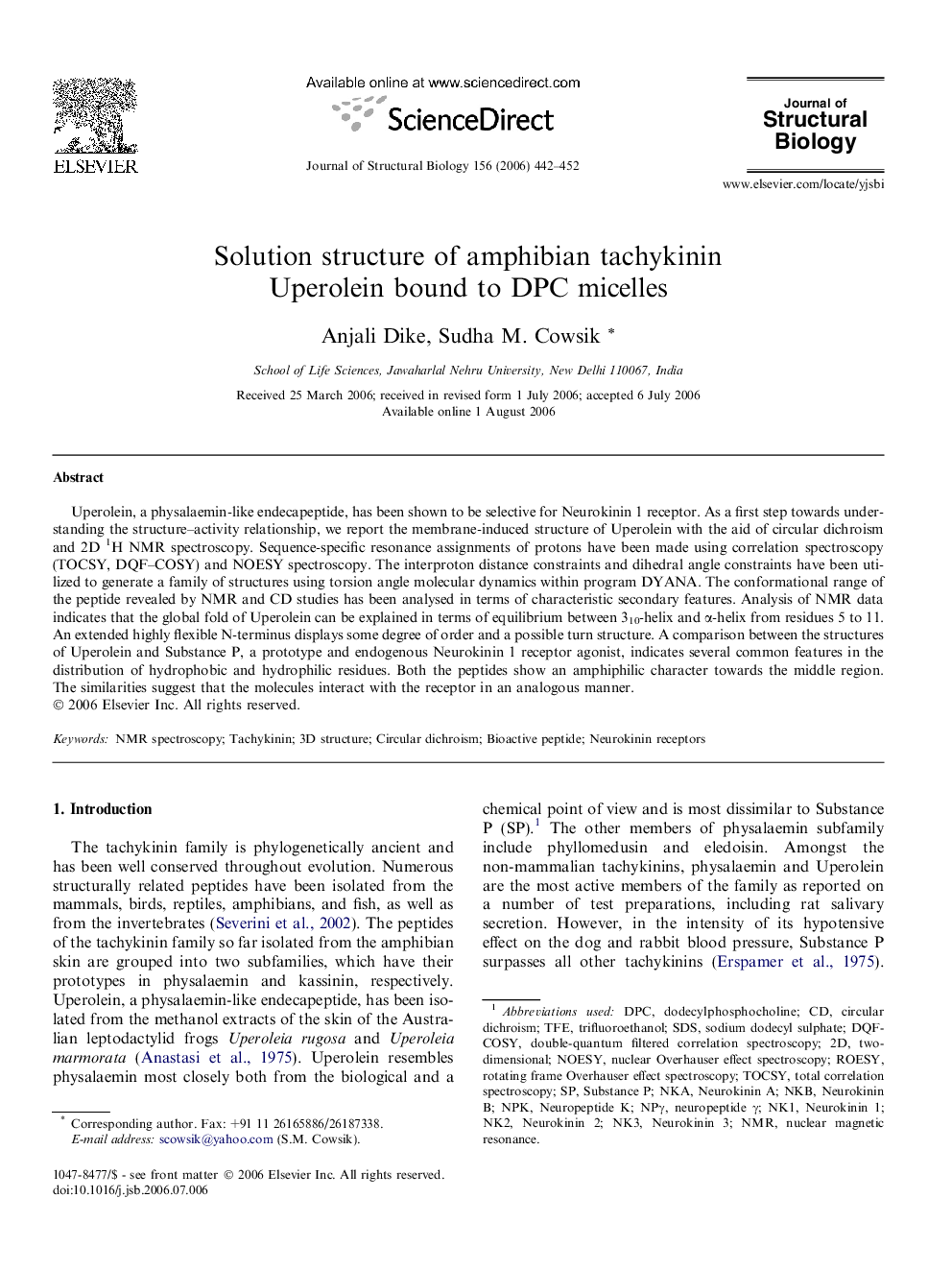| Article ID | Journal | Published Year | Pages | File Type |
|---|---|---|---|---|
| 2829613 | Journal of Structural Biology | 2006 | 11 Pages |
Abstract
Uperolein, a physalaemin-like endecapeptide, has been shown to be selective for Neurokinin 1 receptor. As a first step towards understanding the structure-activity relationship, we report the membrane-induced structure of Uperolein with the aid of circular dichroism and 2D 1H NMR spectroscopy. Sequence-specific resonance assignments of protons have been made using correlation spectroscopy (TOCSY, DQF-COSY) and NOESY spectroscopy. The interproton distance constraints and dihedral angle constraints have been utilized to generate a family of structures using torsion angle molecular dynamics within program DYANA. The conformational range of the peptide revealed by NMR and CD studies has been analysed in terms of characteristic secondary features. Analysis of NMR data indicates that the global fold of Uperolein can be explained in terms of equilibrium between 310-helix and α-helix from residues 5 to 11. An extended highly flexible N-terminus displays some degree of order and a possible turn structure. A comparison between the structures of Uperolein and Substance P, a prototype and endogenous Neurokinin 1 receptor agonist, indicates several common features in the distribution of hydrophobic and hydrophilic residues. Both the peptides show an amphiphilic character towards the middle region. The similarities suggest that the molecules interact with the receptor in an analogous manner.
Keywords
Related Topics
Life Sciences
Biochemistry, Genetics and Molecular Biology
Molecular Biology
Authors
Anjali Dike, Sudha M. Cowsik,
